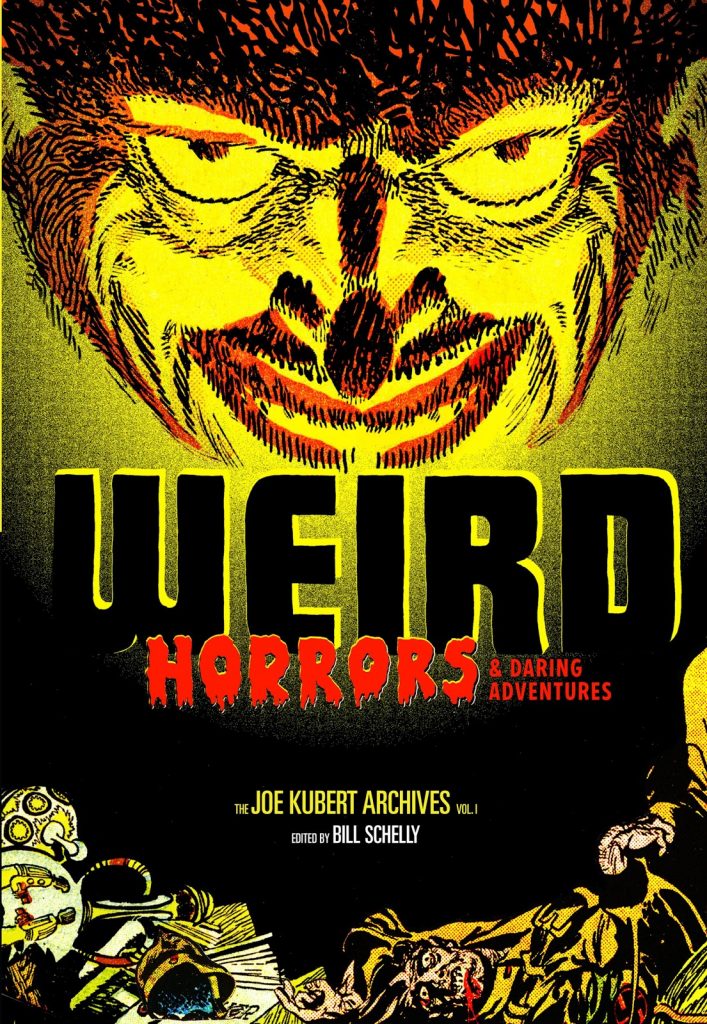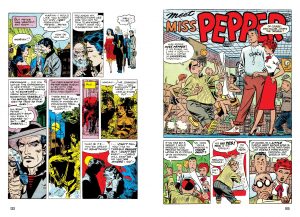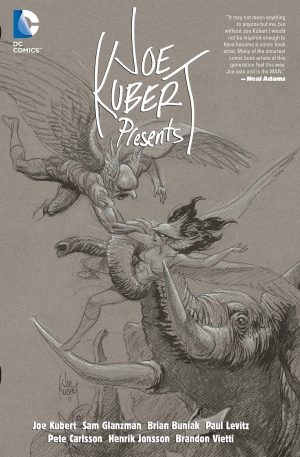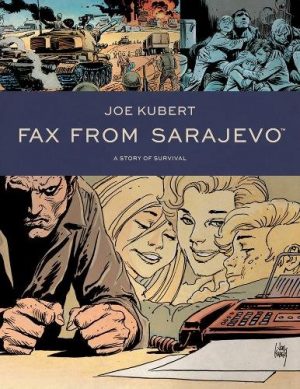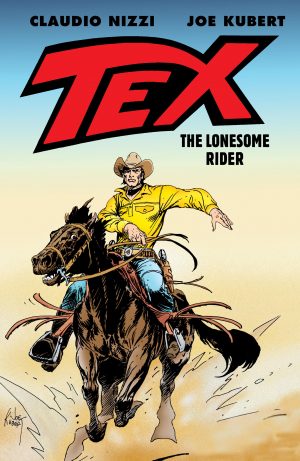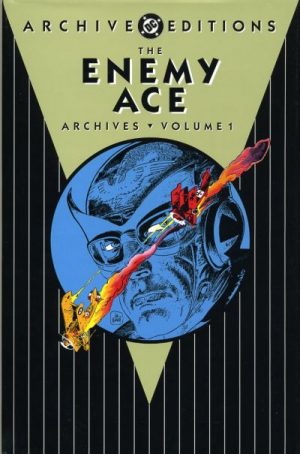Review by Frank Plowright
Joe Kubert produced much of his earliest work for DC in the 1940s, and worked for the company as artist, writer and editor from the 1960s, so it’s very easy to forget there were periods where he also worked for other companies. Weird Horrors & Daring Adventures compiles 33 stories produced from 1944 to 1955 for long-forgotten publishers, created before the Comics Code Authority imposed their wholesome standards. However, while it may sound enticing, be warned that flinging open that door into a world of questionable taste also reveals attitudes to women and racial caricatures that may offend. Should this work be reprinted, even contextualised with apologies, should it be consigned to the mists of time, or should it be altered to remove the worst examples? Your answer to that question will colour your appreciation of editor Bill Schelly’s selection.
As with other reprints of uncredited material from the 1940s and 1950s, the art can be identified, but the only writers known are Charles Biro and Robert Bernstein, credited for three strips between them. The content is sold on the horror material, but actually encompasses the genre spectrum for the period, including Western, SF, crime, satire, war and history. Given the possibilities for lurid content, Kubert is actually very restrained in his portrayals, and the workmanship shines through what are generally mundane and not very surprising plots. Kubert supplies a lot of detail and figures in every panel, largely seen from distance and implanted in well realised locations, although there’s a progression from earlier work to later. As the strips are not chronologically presented, this isn’t obvious.
Most stories cut off after eight pages, but Bernstein’s ‘The Golem’ runs to eighteen mayhem-filled pages of Nazi persecution and resulting revenge in wartime Prague. It’s crude, but entertaining, and that applies to most of the strips if read a few at a time. On the later work, as per the left sample page, Kubert’s growing confidence and storytelling skills shine through more clearly than on his 1940s pages. The few comedy strips are interesting for containing far fewer clues of being Kubert’s work, although they are signed. They have the movement and life found in most Kubert pages, but are open and exaggerated.
Weird Horrors is of limited interest, though. Kubert fans may want to see his earlier and rare work, despite there being hundreds of pages of his later, better art available in collections. This also ought to be an inspiration for any talented would-be comic artist willing to put the effort in. Seeing how Kubert’s raw talent evolved is worthwhile, even if sometimes his best efforts are almost swamped by word balloons.
